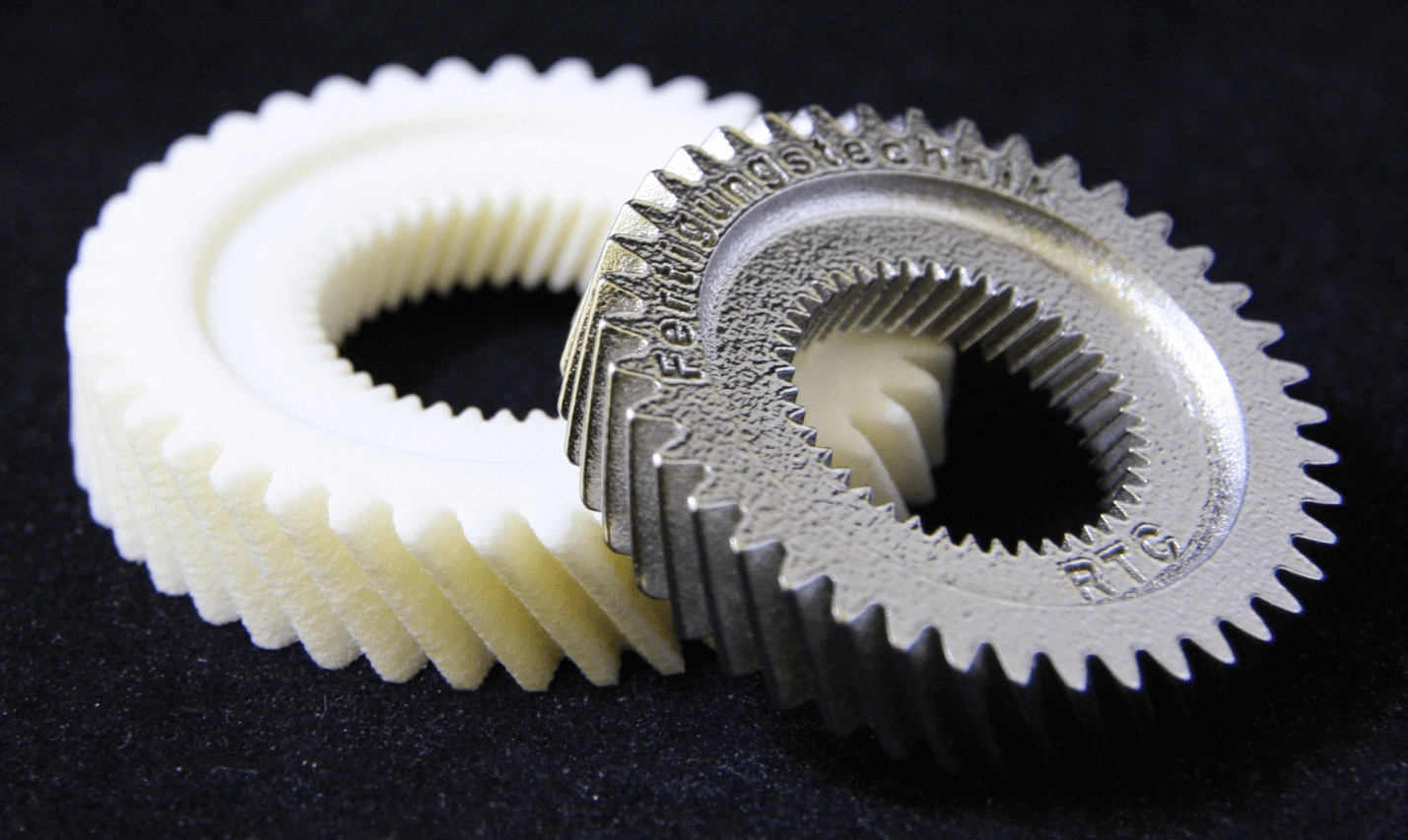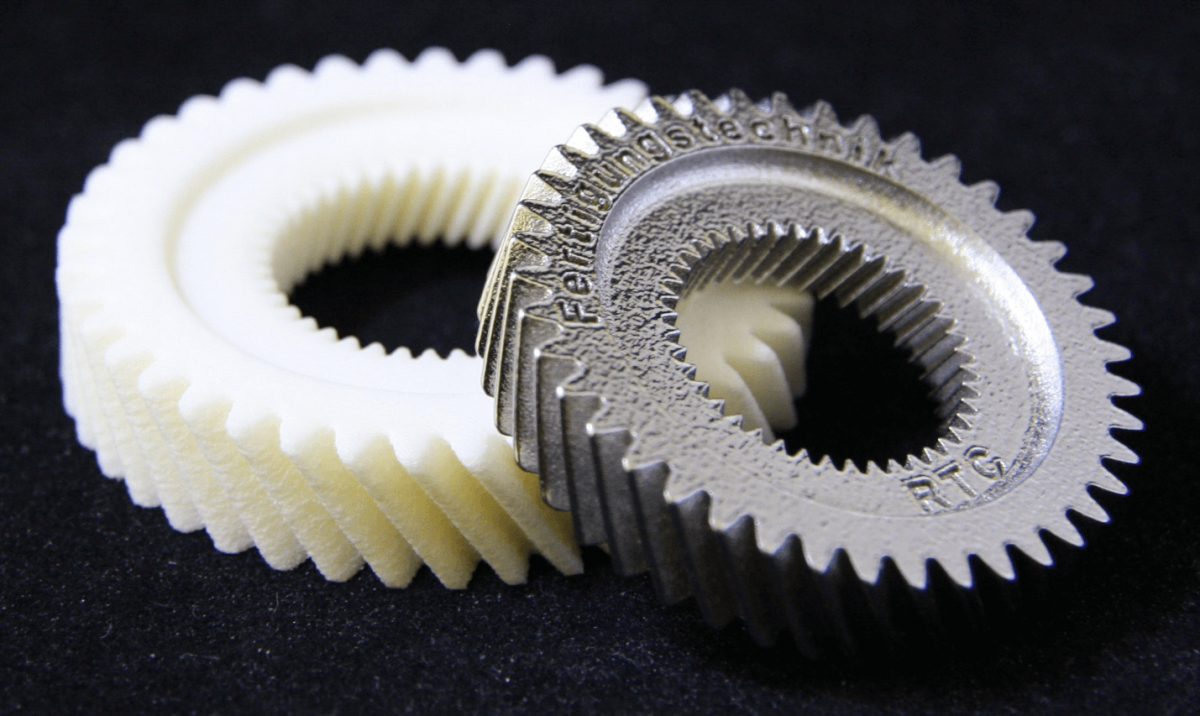Prototypage rapide: tout ce que vous devez savoir
Le prototypage rapide est un terme relativement nouveau. Cependant, il a réussi à gagner en popularité sur une courte période. Les industries du monde entier sont de plus en plus enclines à utiliser le prototypage rapide. Après tout, il offre un certain nombre d'avantages tels que des coûts réduits, une production sans erreur, etc.
The method incorporates a number of manufacturing technologies. The most common of these technologies is additive manufacturing. Nonetheless, there are other technologies that manufacturers use to RP include molding, extruding, casting, and high-speed machining.
So, in this blog post, we will talk about the rapid prototyping, its types, and its advantages.
Introduction to Rapid-Prototyping
You might have heard the term prototyping in the software field. They use it to create software in an effective and efficient manner. The same rule of prototyping applies in other fields as well.
In the simplest form, we can define rapid-prototyping as creating prototypes efficiently. Engineers use these prototypes to test the validity of their product design. Moreover, they are able to see how the final product would look and function.
A more formal definition is: Prototype is a preliminary version of an end-product. It makes it possible to evaluate the design, analyze its working, and test its technology. This results in a product that has the specification that would work in the real-world system.
There is no denying the importance of prototypes in designing the product. In addition, it plays a vital role in the overall development cycle of the product. The good thing about rapid-prototyping is that you can use it at any stage of the product development cycle.
Moreover, you can use it for a certain component or a sub-component of the product. The versatility in terms of production makes RP an excellent choice. What more is that you can make as many changes to the prototype as you like.
The endless iterations are not expensive especially when you compare them with the rework you might have to do in case of design error with the entire product batch.

Rapid-Prototyping: Different Techniques
Below, we have listed different types of Rapid-prototyping.
Vat Photopolymerization or Stereolithography
Vat photopolymerization is an inexpensive, yet efficient technique. Being the first fruitful marketable 3D printing technique, it became very popular in a short time. The technique uses a photosensitive liquid to make the prototype. The ultra-violet light monitored by a computer solidifies this liquid layer by layer to achieve the respective results.
Selective Laser Sintering -- (SLS)
SLS is an effective technique for both plastic and metal prototyping. It uses a powder bed to create one layer of the prototype at one time. To sinter and heat the powder material, SLS uses a high-power laser. Although, it can manipulate two different materials, it lacks the robustness of the SLA.
The prototypes created using SLS are not steady. Furthermore, most products require secondary work to achieve the surface of a finished product.
Fused Deposition Modelling
Another inexpensive rapid-prototyping technique is fused deposition. You will find this technique part of many non-industrial 3D printers. The procedure requires a spool of thermoplastic filament. It melts the material inside the nozzle barrel of the printer.
Now, the computer deposition program lays down the melted material layer by layer in accordance with the requirements. Initially, the fused deposition modeling offered low-quality and weak products. However, technological advancement has improved the entire process.
It still is affordable, yet the quality of the prototype has improved tremendously.
Selective Laser Melting
If the prototype you require is complex and should be highly durable, the SLM prototyping technique is your best shot. Industries like automotive, medical, defense and aerospace frequently use SLM.
La procédure utilise de la poudre métallique fine. Il fait fondre la poudre couche par couche, renforçant ainsi progressivement le prototype. Les fabricants utilisent également cette technique pour construire des composants robustes et solides. Pour faire fondre la puissance, il utilise soit un faisceau d'électrons, soit des lasers à haute puissance.
Les alliages de cobalt-chrome, l'aluminium, le titane et l'acier inoxydable sont les matériaux courants de fusion sélective par laser.
Lamination des feuilles
Contrairement aux SLS et SLM, la fabrication d'objets stratifiés manque de rigidité. Il n'y a pas besoin de conditions spécialement contrôlées. La technique la moins sophistiquée utilise plusieurs stratifiés. Ces séries de stratifiés sont toujours minces. Il utilise ensuite des faisceaux laser pour couper ces piles de stratifié afin de produire la conception CAO.
Pour construire la pièce, chaque couche est fusionnée par-dessus la précédente. Le processus se poursuit jusqu'à ce que la forme souhaitée soit atteinte.
Jet de liant
Le jet de liant offre la possibilité d'imprimer plusieurs pièces en même temps. Il offre une production de masse; cependant, la qualité du prototype n'est pas très forte. La technique utilise un lit de poudre. Pour lier les particules de poudre entre elles, il pulvérise des gouttelettes de liquide via des buses.
Ces gouttelettes de liquide sont micro-fines. Ce processus est répété pour chaque couche de la pièce. De plus, il est important de compacter une couche à l'aide d'un rouleau, avant de commencer avec la couche suivante de la poudre.
Faire cela solidifie l'ensemble du processus. Pour améliorer encore la robustesse du produit, il est durci dans un four. Ce durcissement aide à brûler le liant. Dans le même temps, il aide à la fusion de la poudre dans les bonnes pièces cohérentes.
Traitement numérique de la lumière
Le traitement numérique de la lumière utilise le même mécanisme que celui du SLA. Cependant, il ne nécessite pas de méthode extrêmement sophistiquée pour le durcissement de la polymérisation des résines. Il utilise une source de lumière orthodoxe pour durcir les résines.
Même si elle est moins chère et plus rapide par rapport au SLA, la technique nécessite un durcissement post-construction. De plus, il existe un besoin de structures de support.
Prototype dans la conception de produits
Il est possible de classer les prototypes . Cependant, cela dépend grandement de la précision requise par le consommateur. En termes formels, vous pouvez classer les prototypes en fonction de la fidélité.
- Types de fidélité
- Prototype de faible fidélité
These types of prototypes do not look like the final product. They may vary to a certain degree. The difference depends upon what the product designer wants to achieve from the prototype.
Low Fidelity
The low fidelity products are extremely simple. It is possible to produce them in a short period. The basic idea is to test the broader concepts, for instance, cardboard mock-ups or paper sketches.
High Fidelity
The high-fidelity products are extremely similar to that of the final product. They not only look like the final product but also offer most of its functionality.
Why Rapid Prototyping is Important?
For a company to stay afloat in the modern-day, fast-moving consumer market, it needs to be innovative. Not only this, but the company also needs up to come up with better, advance, and sophisticated products fast to ensure competitiveness.
Étant donné que l'innovation technologique et le développement plus rapide des produits jouent un rôle essentiel dans le succès de l'entreprise, le prototypage rapide devient donc une partie importante du cycle de développement du produit.
Avec le prototypage rapide, il est possible de réaliser ce qui suit.
- Le prototypage permet de créer efficacement de nouveaux produits. Cela a tendance à accélérer tout le cycle de développement du produit.
- Il est possible pour les ingénieurs de déterminer si leur idée de produit fonctionnera ou non bien avant de passer à la phase de production. Avec RP, vous pouvez réellement valider votre idée de conception de produit.
- Il offre également la vérification finale du produit par rapport aux objectifs commerciaux et aux exigences techniques.
- Avec le prototypage, les utilisateurs finaux, les clients, les clients peuvent donner des commentaires en temps réel car ils auraient un produit tangible avec lequel travailler.

À emporter
Le prototypage rapide facilite l'innovation technologique de toutes les manières possibles. Il permet aux développeurs et aux ingénieurs de valider l'idée de produit. De plus, il permet de détecter tout défaut dans la conception du produit, bien avant la phase de production.
Avec le prototypage rapide , vous pouvez réellement transformer votre idée en quelque chose de tangible. Vous pouvez présenter l'idée aux investisseurs avec plus de confiance et augmenter les chances de les atterrir.





